When an American Couple Tests Menu at Popular Split Restaurant (VIDEO)
March 11, 2019 - Only Food and Horses, a popular food vlog (video blog) out of Split, put two Americans to the test last month to see how much they knew about what's in some of the dishes at favorite restaurant Corto Maltese.
HVS President Talks 2022 European Water Polo Championships in Split
March 10, 2019 - Mladen Drnasin’s entire life has been in water polo; he is a child of Jadran, and now, the president of the Croatian Water Polo Federation. As a member of the board of directors of Jadran, he returned the club to the European elite as they compete in the Champions League this season. Under Drnasin’s leadership, the European Water Polo Championships will also be hosted by Croatia, in Split, in 2020.
Slobodna Dalmacija sat down with Drnasin for an interview about the Croatia national water polo team and what we can expect for the 2022 European Championships spectacle in Split.
Water polo is one of the sports where Croatia is recognized internationally, with the national team usually finding their way to a medal. What do you expect from the national team in the years ahead?
“We already set the pace long ago in 2004, with the tendency to win a medal in every major competition. It is hard to guarantee that in a sport, and sometimes luck is a crucial factor. But we are moving forward with dedicated work, reflection, and by selecting the correct strategy and good planning, have brought it into a position where the impact of luck becomes minimal. For the past ten years, we have succeeded, and I believe that we will continue with the same success.”
Do you believe in Croatia national team coach Ivica Tucak?
“Tucak is a great coach, and we have excellent players and staff. This year, the central event is surely the World Cup in South Korea in July, and next year, along with the European Championships in Budapest, the Olympic Games in Tokyo follow.
It is up to us to prepare in the Federation and create the best situation possible for our young players to get into a position to win a medal, and with that, the coach is to give the maximum.”
Specific to your mandate is certainly hosting the European Championships in Split in 2022. How many people will be involved in this project?
“As many as necessary. It's nice that we are hosting the European Championships. In addition to the support of the City of Split, the County, HOO, SDUŠ, and HTV, the support and concrete assistance of Prime Minister Plenković and the Government of the Republic of Croatia was crucial; I would like to thank all of them sincerely. Split is a city of sports, eager for great sporting events, full of former and current athletes, outstanding sportspeople. It has proved the excellent organization of significant sporting events.
We have already completed preliminary meetings with Mayor of Split Andro Krstulović-Opara, made the initial plans, met with representatives of Spaladium Arena regarding the technical possibilities. In the City of Split, we have the right partner, and we all want to organize this competition flawlessly. I'm confident we will succeed.”
Is Spaladium Arena technically too demanding to organize?
“The European Championships is demanding in itself. Certainly, it would be easier to organize this competition in an already adequate swimming pool, but the Spaladium Arena offers the ambiance, the capacity of the auditorium, the stands, and the accompanying contents within the building itself. We intend to set up two swimming pools inside the hall, one for the competition and the other for warmups, create a new floor level and stay within the capacity of 9,000-10,000 seats, set up video projections, and more.”
Do you believe that the stands will be full?
“I believe they will. The matches of our national team will certainly be well-attended, and apart from a number of foreign water polo fans who accompany their teams to such competitions, we intend, in cooperation with the Tourist Board, to promote the event to foreign tourists who will be in Split at the time and will have the opportunity to watch their national teams in the competition.”
What will remain in Split after the Euro?
“I believe that an outstandingly organized competition and the beautiful impressions of Croatia and Split will remain, and that Split will be further promoted as a destination of beauty, gastronomy, content, and hospitality.”
You can read the full interview on Slobodna Dalmacija here.
To read more about sport in Croatia, follow TCN’s dedicated page.
City of Split Begins Public Transport Revolution
The people of Split, residents of the surrounding areas, and all of their guests will enjoy 34 new Promet buses from October 15 this year, reports Splitski Dnevnik on March 8, 2019.
Through a public procurement process, Promet has signed contracts with company Jolly Auto line d.o.o from Šibenik for the purchase of 20 Mercedes buses, and Auto Hrvatska sales service center d.o.o. from Leskovac for 14 solo MAN buses. The contract value is HRK 73.9 million, and the project is co-financed by the European Union from the Cohesion Fund.
In the Grant Agreement signed in 2018 between Promet d.o.o., the Ministry of the Sea, Transport and Infrastructure and the Central Agency for Financing and Contracting Programs and Projects of the European Union (SAFU), HRK 74.9 million, or HRK 93.6 million with VAT, was secured for this project. From this amount, the EU covered 85% from the Cohesion Fund, and the remaining amount is from the Croatian budget.
"The implementation of the project will solve the key problem of having an insufficient and obsolete fleet, and vehicles with a lot of kilometers which increase the pollution of the environment. Namely, by purchasing the contracted buses, Promet will improve the quality of service and increase the number of passengers in public transport, and reduce the emissions of harmful gases as new vehicles will meet the EURO 6 norm. The current situation has led to a decline in the quality of service and increased costs of vehicle maintenance and fuel consumption. It is not fully secured with access for people with disabilities, which reduces the availability of vehicles and general public transport,” Miroslav Delić, President of the Board of Directors Promet, said.
The project is being implemented in the area of the second largest city in Croatia which has many passengers, and the general goal is to raise and improve the quality of public transport of citizens in the area of Split and its surroundings. For example, the contracted buses have a specially adapted space for people with disabilities and also provide unobstructed access from the bus station to the middle of the vehicle, or the second door. Namely, the ramp for people with disabilities will be located only on one of the entries on the bus - the middle door on buses with three doors and the second door on two-door buses. The buses will also have a special place for wheelchairs where they can be fixed with a seat belt, which enables them to drive freely and increase the quality of service.
“The modernization of Split public transport that we started at the beginning of last year goes on! This new fleet of 34 buses, which, thanks to the successful application of Promet, is funded by the Cohesion Fund of the European Union and the State Budget, will significantly raise the quality of our public transport and thus the satisfaction of our fellow citizens. Promet Split is a significant factor in the development of our town and county, one of the most important city companies whose services are used by thousands of Split people, our neighbors, and guests daily. That is why it is important to have the highest level of service, which means all available, secure and accurate buses. No less important is the fact that new buses will contribute to better environmental protection, but what I am most looking forward to is that our fellow citizens with special needs will have far easier access to public transport,” said Andro Krstulović Opara, mayor of the City of Split.
Promet d.o.o. carries out transport on 24 local lines, 41 county lines and 3 intercity lines, mostly in the area of Split, Solin, Kaštela, Trogir and Omiš, Primorski Dolac, Prgomet, Lećevica, Klis, Dugopolje, Marina, Muć, Podstrana, Seget, Šolta, and Šestanovac. The length of all lines is about 1,660 kilometers.
At the end of 2017, Promet had a fleet of 146 buses of various brands, types and purposes, with an average age of about 12 years. In January 2018, nine used articulated city vehicles were purchased, with the current state of 155 buses. Of the 668 employees of Promet, 340 drivers transport more than 34.6 million passengers a year and travel around 8.7 million kilometers.
To read more about travel in Croatia, follow TCN’s dedicated page.
Split's Jozo Parčina to Invest 40 Million Euro and Employ 150 People?
As Poslovni Dnevnik writes on the 7th of March, 2019, well known Split entrepreneur Jozo Parčina, perhaps best known to the wider public as the owner of the beautiful Luxe Hotel in Split, could soon become the owner of the "Kaštela Riviera".
Not even three full years after the launching of bankruptcy proceedings over the defunct Kaštela company, they acquired the conditions for the sale of their property, which is largely under a mortgage, among which the most prized is the hotel "Palace".
The interest in buying was confirmed to Slobodna Dalmacija by Parčina himself, who in the meantime redeemed the receivables of the Austrian HETA agency, a successor to Hypo Bank.
''I have redeemed the HETA receivables because I want to buy a complex in Kaštela, invest 40 million euros in its renovation and upgrading, put the hotel in order and employ 150 people,'' said Parčina when discussing the plans, adding that it would be a four or five-star hotel, and would boast up to 350 rooms.
The renovation refers to the only remaining building, the old "Palace" building with 230 rooms, protected as a cultural monument, and another new building. Since the surface areas of the complex in Kaštel Stari, located on the shore, is about 38,000 square metres in size, a building larger than the existing one will be permitted.
''I'm already in the hotel business. With "Luxe", which has been in operation for ten years, another hotel in Split is being prepared, where works are going to be finished soon, so I'd like to expand this activity by buying a complex in Kaštela,'' added Parčina, who in the meantime has invested in some real estate which he now rents out.
In earlier years, Jozo Parčina was known to the general public as the owner of a company which dealt with various gambling machines located across Dalmatia and Istria, this business was eventually shut down by tax collectors and by the Croatian Government in 2016.
If he succeeds in purchasing the "Kaštela Riviera" property, Parčina estimated that from the moment of everything being ready for work, it would take up to three years for the investment to be realised. Assets will be sold in bankruptcy proceedings through the Financial Agency (FINA) so it's clear that the real estate will go to whoever is willing to pay the most.
Make sure to stay up to date by following our dedicated business page.
Heart of Adriatic: Split-Dalmatia County Presents Local Products at ITB Berlin
This year, the Croatian National Tourist Board is presenting the Croatian tourist offer at the world's leading travel fair ITB, which is held in Berlin from March 6 to 10. The Minister of Tourism, Gari Cappelli and the Director of the Croatian Tourist Board Kristjan Staničić are also participating in the fair, where they will meet with representatives of key partners in the German market such as TUI, FTI, British Airlines, Eurowings, Jet2, Condor, and others. Split-Dalmatia County perfect Blaženko Boban and the director of the Split-Dalmatia County Tourist Board, Joško Stella, are also in Berlin, reports Dalmacija Danas on March 6, 2019.
This year, Split-Dalmatia County is represented for the first time with an independent stand, which will be presented to numerous partners who will be able to taste local cheeses, prosciutto, and wine under the theme "Heart of the Adriatic”.
In his speech, the Prefect welcomed Minister Gari Cappelli, Director of the Croatian National Tourist Board Kristijan Staničić, Ambassador of the Republic of Croatia to Germany Gordan Grlić Radman, the State Secretary at the Ministry of Tourism Tonči Glavina and the Director of the Split-Dalmatia County Tourist Board Josko Stella.
“In Berlin, at the biggest tourism fair in the world, we bring a taste of the clearest sea, the air of the warmest sun and the soul of the noblest man, our Dalmatia.”
The Mayor of Sinj Kristina Križanac, Mayor of Hvar, Rikard Novak, Mayor of Stari Grad Antonio Škarpa, Mayor of Jelsa Nikša Peronja, Mayor of Bol Tihomir Marinković, Director of the Makarska Tourist Board Hloverka Novak-Srzić, Director of the Split Tourist Board Alijana Vukšić, Director of the Sinj Tourist Board Monika Vrgoč, Director of the Hvar Tourist Board Petar Razović, Director of the Marina Tourist Board Iva Dvornik, Director of the Agency for Coastal and Inland Transport, Paula Vidović, and the President of HGK Split Jozo Tomaš, as well as other valuable tourist workers from the private and public sector, were all in attendance. Split-Dalmatia County was also represented by distinguished bartender Jure Vojković and owner of Villa Dvor Petar Ćurlin who presented their eco-friendly products. The stand was visited by Mayor of Rijeka Vojko Obersnel, Mayor of Korčula Andro Fabris and the Prefect of Dubrovnik-Neretva County Nikola Dobroslavić with his associates.
“Croatia is still very interesting in the German market, and we expect tourism traffic at the level of last year. Germany and Croatia are friendly countries, and I particularly emphasize investments in the Republic of Croatia amounting to EUR 3.2 billion in the last ten years. Our goal is to strengthen our relationships further, and next year, Croatia will be the partner of the largest agricultural fair Green Week, which will be held in Berlin in early 2020. It will be an opportunity to present, together with the Ministry of Agriculture and HGK, what Croatian villages produce for Croatian tourism - that is what we want to strengthen,” said Minister Cappelli.
“Considering the importance of the ITB fair, which has positioned itself as one of the most important tourist exchanges in the world, and considering the importance of Germany as the strongest market for Croatian tourism, the appearance, and presentation of our offer at this fair is of great importance. According to the information of the partners with which we have so far held meetings, Croatia's position on the German market is stable, sales are intensified, but the peak is still ahead of us. Our goal is to repeat the results from last year when almost three million German tourists visited us, who achieved more than 21 million overnight stays,” said the director Staničić.
ITB Berlin is the world's leading tourism industry fair that holds its 53rd edition this year. The fair welcomes more than 180 countries worldwide and is visited by more than 150,000 guests annually. It is estimated that contracts worth over 7 billion euro will be agreed during the fair.
To read more about travel in Croatia, follow TCN’s dedicated page.
Marin Brbić Returns to Helm of Hajduk Split as President
Marin Brbić led Hajduk as the president for four years, from 2012 to 2016. He was remembered as the man who managed to save the club from bankruptcy during one of its toughest times. On Wednesday, Hajduk announced that Brbić would lead the club once again.
Split Police Introduce Fines for Trespassers While Marjan Under Treatment
While Marjan undergoes treatment for the bark beetle, a bug that attacked its pine forest, many areas of the park are restricted to the public. To ensure there are no trespassers, Split police officers have announced they will punish citizens if they enter the enclosed areas of the park where works by company "Matima project" are ongoing, reports Slobodna Dalmacija on March 6, 2019.
Currently, works are being carried out in the area from the Institute to Bene. Recall, almost one-third of the trees inside the park will be cut and removed from the forest during the treatment. This includes trees that are already dead and those that are still thriving but are under the threat of the bark beetle bug.
“It is forbidden to access the locations where the works are being carried out. However, so far there has been anarchy. I was constantly worried about something that did not happen. But it will not be that way anymore. Applications to the police against an unknown offender in such cases are not effective. The police are on the ground, not on patrols, but literally on the ground. Whoever is caught will receive a fine on the spot,” said Marjan Nenad Ružić, the Crisis Staff Coordinator.
The Split-Dalmatia County Police Administration revealed that the fine for entering the forbidden areas on Marjan amounts to 500 kuna.
“We call upon citizens to respect the temporary measures of the ban on movement, but it is not our primary goal to punish them, this is for their safety. A fine will be imposed as the ultimate measure, only if someone is really disobeying the prohibitive signs, alerting staff on the ground and the police, and challenging their security, property and the lives of others. But we appeal to the citizens to have patience and walk in other parts of Marjan,” says Ana Čepić from the Split police.
While intensified measures to ban access to the workspace will bring more security to the citizens, the process of works on Marjan will now be less visible on social networks and the media, unlike the last few days where we've been exposed to various videos and photos by citizens.
Recall, the rehabilitation of Marjan began on February 26, 2019, which forced the closure of all traffic (pedestrian and motor) from the Institute to Bene. The regular bus line is also not operating. The works are being carried out by the company Matima Project - and ultimately, Marjan’s pines will be replaced with more sustainable species. Some 20,000 trees will be removed from the Split park in total and the process, as expected, will take time
To read more about Split, follow TCN’s dedicated page.
Top 10 Things Most Tourists Miss in Split
March 6, 2019 - We are delighted to welcome back an old TCN friend and former colleague for a little inside information on the tourist attractions most visitors miss in Split.
Ivica Profaca was a very popular writer at Total Split for some time before he decided to try his luck at tour guiding in his native city. By all accounts, he is an even better tour guide than a journalist, so check out his tours next time you are in the Dalmatian capital. And while you are waiting, here are the top 10 things most tourists miss in Split.
NAPOLEON'S POSTAL BOX
One of the strangest (and best hidden) historical spots in Split is the city's oldest postal box, barely visible on a little square next to the main city square Narodni trg, or Piazza.
It's been out of use for a long time and is partly covered with tables of a nearby bar, but it's worth looking for it, especially for the French who will recognize the inscription saying 'Boite aux lettres' on it.
The box is a remnant of Napoleon Bonaparte's rule in Dalmatia that lasted only eight years, from 1805 to 1813, but left an incredible mark in the region's history. Despite being an occupying force, we can easily say that Illyrian Provinces as this territory was called at the time, brought Dalmatia closer to western civilization. Post-revolutionary French invaders abolished Jewish ghettos and slavery which still existed in some rural areas. They opened public schools for boys and girls, built hundreds (if not thousands) of kilometres of roads, started some of the first heritage revitalization projects in Split, launched the first newspapers in the Croatian language, built promenades in Split and Trogir, brought down Venetian walls around towns to allow their expansion, built first public parks and street lighting, and many, many other things. Who can then blame Split to name one of its main streets after Napoleon's friend and governor of Dalmatia Marechal Marmont.
The box itself is part of French reforms, too. The oldest document found in archives about the postal service date back to 1806, when the French arrived in Dalmatia. Before that it was unthinkable the one could drop a letter in postal boxes as we know them today, and be sure that it will get to where it was sent.
A PAINTING OF PROPHET MUHAMMAD
One of the best-known rules of Islam is that art should not depict any human being, especially not Prophet Muhammad. There are exceptions in countries like Turkey or Iran, but in general, the written word is a much more important means of spreading faith than images. Modern times brought even more radical views on attempts to show the Prophet's image.
Around Europe, there are very few examples of Christian art using Muhammad's image, and one of them is in Split, to be more precise in the monastery of Saint Anthony near Poljud Stadium. This hidden jewel remains unknown even to many locals. It's probably one of the most interesting depictions of the Islamic prophet in European art, showing him as part of the bigger composition with around forty clerics debating about the Virgin Mary and immaculate conception. According to a legend, the 18th-century painting saved this monastery from Ottoman destruction. Read about this and other wonders of this extraordinary church here.
A VIEW FROM THE TOP OF SPLIT
Currently, Marjan forest park is a construction, or de-construction site, because of works undergoing there in cleaning pine trees infected with bark beetle. Thus, wandering around one of the most popular spots for locals is partly limited, and everyone should obey orders from workers there. It's better to be safe than sorry. However, works should end by the end of April, and Marjan will go back to a throne of popular hiking, walking, biking, climbing, running, swimming (and any other leisure activities) destination. It's so much more than just a hill and park, because it has spiritual meaning for people in Split. One of Marjan's most popular features is also being the best possible viewing point. However, most of the people visiting this small hill will limit their explorations to the lowest viewing point, just next to the 1573 Jewish cemetery. The view is beautiful from there, but don't stop there, there is an even better one. Take a few hundred stairs to the top terrace called Telegrin. It's not too high, just 178 meters altitude, but you will have the opportunity to enjoy a 360-degrees view of Split and the surrounding area, with mountains Mosor and Kozjak, Biokovo in the distance at east, almost all the Central Dalmatian islands, plus Kaštela Bay and Trogir in the west. Depending on the weather, the view goes tens of kilometers away. It's also a nice exercise, because the ascent includes exactly 875 stairs from the waterfront to the top. If you don't like stairs, start from Saint Francis church, go up through Senjska street to the first viewing point, and then continue to the right of Jewish cemetery. The stairs will take you to the plateau from where there are more stairs to the top. When going back, you can choose some other route, or you will miss some other beauties of Marjan, from nature to small churches. Maps are available at the Tourist Board's information centers, or here (Croatian only). Or, just explore it. I love this hill, and I spend every free moment there.
MODERN ARCHITECTURE IN ANCIENT CITY
When speaking about architecture in Split, the first and second thought is always the city's Roman and medieval heritage, with 17 centuries of life continuity. But there is more, especially for modern architecture fans. New York Museum of Modern Art recently exhibited some of the highlights of post-WW2 architecture in the former Yugoslavia and Split had its place in it with some of its the modern age structures. Two of them are particularly interesting, and were exhibited in New York; HNK Hajduk stadium at Poljud built in 1979, and 1970's residential project Split 3 at the eastern part of city. If you like modern, especially communism-era architecture, don't miss it, and Hajduk offers guided tours of its stadium. To learn more about Split 3, click here.
To see it, take a walk from the city center, it takes about 20-30 minutes to reach it, or take any bus going eastbound and get off close to the city hospital.
Some other modern periods also have interesting representatives in Split, like the 1930's City Hall, old post office building, today Cornaro hotel, art nouveau Nakic house at Narodni trg, etc.
VISIT THE THEATRE
The Croatian National Theatre in Split might be one of the most neglected cultural institutions among foreign visitors, and it definitely doesn't deserve that. The main reason is probably that its drama repertoire makes most of the theatre's program, and it's not really attractive if you don't speak Croatian. On the other hand, this theatre has probably the best opera ensemble in Croatia, and excellent ballet, both highly awarded both nationally and internationally. They usually play classic pieces in the opera, and the ballet is both modern and classical. Also, any opportunity for some classic music concerts leads to a good experience, especially with the theatre's symphony orchestra. It's definitely worth checking their schedule, and tickets are available either online or at the gate. An additional experience is visiting the theatre's building, 1890's piece of neo-classicism with traditional boxes.
During the summer the theatre doesn't work, but it produces the Split Summer Festival, a month-long event which brings productions in drama, opera, ballet, and music, as well as exhibitions. The festival is held mostly outdoors or in different venues ranging from churches to museums.
ARCHEOLOGY AT THE GLANCE
Among the museums in Split, the Ivan Mestrovic Gallery is by far the most popular, but lack of time or information makes some others unjustly missed. One of them is the Archaeological Museum with a large collection of prehistoric, Greek and Roman artefacts. It's definitely not the best museum you will ever visit, because its concept is mostly old fashioned, without almost any interaction or other modern means of presentation.
On the other hand, the Archaeological Museum's permanent collection is world class, and it has a quality that not so many museums have; most of what its exhibits are local, mostly found in a circle of about hundred kilometres. That's why this institution is absolutely worth visiting. It has courtyard filled with larger artefacts, mainly from Diocletian's Palace, Salona and some other sites with remains from Greek and Roman period. Indoor, you will find smaller pieces like pottery, weapons, jewellery, coins, etc. It has a small, not very rich gift shop, but enough to get a souvenir more original than those in one of the zillion shops in the old town. Just like with the theatre, the museum is based in a beautiful building, built for this purpose in 1914.
The museum is also responsible for the archaeological park in Salona, with remains of the ancient Roman city of 60,000 people that once was a capital of province Dalmatia.
BEACHES BEYOND SUN & SAND & SEA
Split has a long coastline, and most of it - except for the city harbour - is suitable for swimming. Still, most of the tourists concentrate on sandy Bačvice, or pebbled Kašjuni and Kaštelet. Yes, they are all fun, the water is clear, and you can see a lot of people, all good reasons for a visit. What to do when you prefer quiet, secluded spots where you won't need to share space with more beachgoers than you can and want to count? The answer is - go to Marjan forest park. Two of beaches I mentioned here are technically at Marjan, but if you walk maybe 15-20 minutes more, or take a bus, you will find yourself at places which won't look like you are in a city. That goes especially with the part starting from Institute of Oceanography and Fishing northbound. Most of the spots to swim there are rocky, so say goodbye to lying on a towel as you can do at places mentioned above. On the plus side - that's exactly why those places are underpopulated. There are some of them where there are more people, like Bene, but it's easy to avoid them.
And one very important note: don't go there if you like to "treat" everyone around you with noise, no matter how much you like that music coming from your phone or whatever you use. People who come to swim in Marjan go there to enjoy some peace.
IVAN MEŠTROVIĆ OUTSIDE OF GALLERIES
Of all great Croatian artists, chances are that the average (or even above average) visitor probably will recognize only Ivan Meštrović. A museum with his major works is the busiest one in Split, both because of the beauty of his statues and spectacular villa where it's based, and where Meštrović once lived. Part of the Museum is also Kaštilac, a castle-like building on the cliff overlooking the sea. Split is especially important for Meštrović's life and work, not only because of the musem, but also because of his public works which can be seen around town. Some of them can't be avoided, some of them are easily missed.
One of them is a spot which is on everyone's must-see list, it's a gigantic statue of Bishop Gregory of Nin.
I don't know many people who didn't want to rub its toe.
Next one is a statue of Marko Marulić, the father of Croatian literature. Placed at one of the most beautiful city squares, it's highly visible.
But then search for three more, equally valuable, but more hidden pieces. One is a sarcophagus of 1920's Croatian politician, Split-born Ante Trumbić in Saint Francis church and monastery cloister.
He and Meštrović were close friends, and when Trumbić died in 1938, the artist paid him tribute this way. When there, the cloister and the church are worth seeing as a sort of a local Pantheon of distinguished citizens.
There are two more Meštrović works outside his museum in Split. One is only sort of public, because you need a ticket to enter Jupiter's Temple/Baptistery where his statue of Saint John the Baptist is placed. For the second one you will have to climb some stairs to get to, because the bust of poet Luka Botić is placed on the lower summit of Marjan forest park, in front of the Meteorology station
SIRNICA FOR EASTER, SPLIT STYLE
For the last two easy-to-miss things, I chose food, but very seasonal, for the early spring we are already enjoying in Split. The first one is related to Easter holidays, it's a traditional sweet bread called sirnica which is must-have in every household in Split in this part of the year. For those who speak Croatian, the name of this pastry can be confusing, because it shares the name of a cheese pie, though there is no cheese in the Split version of sirnica. So, when you are buying it, make sure you don't get the cheese version. It has something to do with old word for dough rising. Where to get it? Well, it's available almost everywhere, and it's good in most of the places. But, there is only one place where I buy it, the oldest pastry shop in town called Tradicija.
If you find yourself in Split on Saturday before Easter, you will see a long line of people waiting for sirnica in front of Tradicija. Don't be discouraged; it's worth it.
ASPARAGUS - FOREST SPRING DELICACY
The second food choice you should try in Split (and the rest of Dalmatia) is definitely asparagus. But not those thick, wood-like sticks coming from cans - check out its wild, or free grown relative.
From March to early June you will see it anywhere at the market, usually tied in bouquets of 20-30 pieces. Sellers pick them anywhere in nature, because it grows almost like a weed. It rarely changes its season, but the best ones are always in spring. If you are adventurous enough, you can even try to pick it by yourself; there are a lot of pickers in Marjan or the hills around Split. Only be careful of snakes.
It's much easier to prepare them then to pick them. Cut the upper, soft part and cook it in water until it boils. Then you can mix it with eggs, cottage cheese, add it to risotto or pasta. If you don't have a place to cook it, most of the restaurants will have it in some dish.
To read more about Split, follow TCN's dedicated page.
Flights to Croatia: Laudamotion Adds Winter Line to Split, Aigle Azur to Zadar
March 6, 2019 - The latest news from around Croatia’s airports for new flights to Croatia with updates from Split and Zadar.
Austrian low-cost airline Laudamotion will now fly to Split throughout the year! Namely, in addition to the new Split-Stuttgart line which will begin traffic on March 31 this year, the airline has also announced a new winter flight, set launch for the 2019/2020 season. Laudamotion will thus operate between Split in Stuttgart this winter from October 27, 2019, to March 28, 2020, reports AvioRadar.
In the summer, Split and Stuttgart will be connected three times a week, on Tuesdays, Wednesdays, and Sundays. In the winter, Laudamotion will continue operating three times a week, on Tuesdays, Thursdays, and Saturdays. All Laudamotion tickets are sold via Irish low-cost carrier Ryanair.
It is also interesting to note that the competing low-cost carrier German Wings operates between Split and Stuttgart in the winter.
AvioRadar also reports that Aigle Azur will be a new name among carriers to Zadar this year. Namely, the French airline will operate on the new Lyon-Zadar charter line. The route will run once a week in August, from August 4 to September 1, 2019, and will work in the evenings on Saturdays.
The French regional air carrier HOP! has already flown this charter line for two years with the Canadair CRJ-1000. Thus, the announcement of Aigle Azur means that the capacity has increased on this route.
Aigle Azur is little-known to Croatian airports. In the early years, the airline was used mainly for charter flights between France and Dubrovnik. The company was founded as Société Aigle Azur Transports Aériens as the first private airline after World War II in France, in 1946.
At present, Aigle Azur has nine Airbus 320 aircraft and two Airbus 330-200 aircraft for intercontinental lines. The majority owner is the Chinese HNA group, which is the owner of Hainan Airlines.
To read more about travel in Croatia, follow TCN’s dedicated page.
Sustainable Community, Nove Starine Park in Solin Celebrates 15 Years
March 6th 2019; the talented team of writers at TCN is ever-growing and we are happy to welcome number 129 to the ranks. Mischa Pearson is best known for founding her multi-award-winning NGO fighting food waste and hunger in England. She was both nominated and recognised as one of the top most influential women in Suffolk where she grew up, and currently lives in the city of Split. Mischa has since been sustainably travelling Europe with her home educated son and their dog. Her first piece for TCN is naturally on a sustainable topic, the Nove Starine Park in Solin celebrates 15 years; Mischa caught up with the founder to learn a little more.
Welcome Mischa; if you are interested in writing for Total Croatia News, please contact us at This email address is being protected from spambots. You need JavaScript enabled to view it.
“If you go down to the woods today, you’re sure of a big surprise”. The old Anne Murray song might suggest a Teddy Bear or two, but it’s not that which causes a stir in the old forest, the Nove Starine Park...
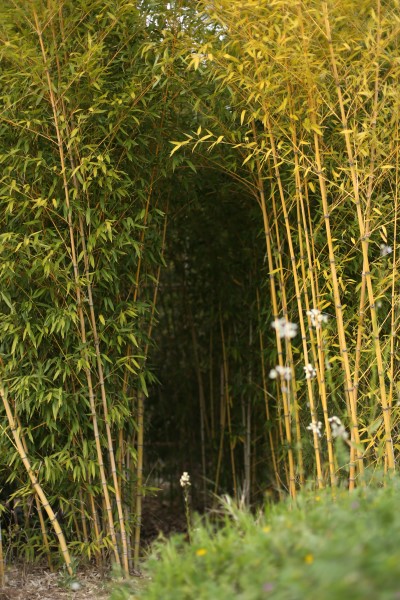
Photo Credit: Srđan Tutić
About the Nove Starine Park in Solin
Sculpture and concept artist Ivan Tokić turns his ambitions to the sustainable project - Nove Starine Park development, with one 10,000 square meter forest in Solin. Set deep in the heart of mother natures dwelling place and neighbouring the ancient city of Salona --capital to the Roman province of Dalmatia, and birthplace to Emperor Diocletian lies the Nove Starine Park; home to this emerging artistic community.
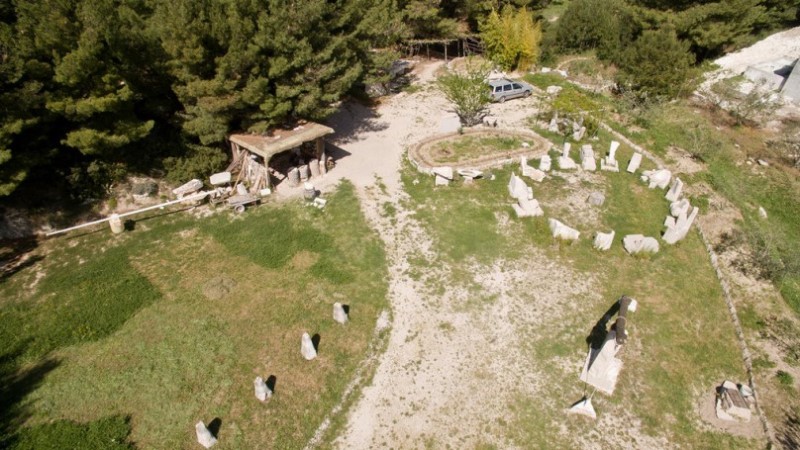
Photo Credit: Ivan Tokić, the idyllic setting of Nove Starine Park
Nove Starine Park boasts everything from an outdoor cinema to a sauna and climbing gym, set amongst old pines stretched from a bed of limestone soil. Offering respite and shared meals to an array of international travellers willing to volunteer their skills, often escaping the city life in countries such as France, Holland and Germany; the sanctuary has taken on a charm unlike any other near the Adriatic coastline.
Lochlan, who stayed with Ivan at Nove Starine Park for three weeks in late 2017 described it as a "diamond tucked away in a beautiful forest reserve".
What inspired the development, and what's in store for the future?
"I started Nove Starine Park almost by accident, it was totally spontaneous and I actually wanted to be an actor prior to this" Ivan explains, as he walks the grounds. “I didn’t have food, so I grew some, and though deep into the philosophy of healthy soil, I used mostly intuition and communication to understand the natural environment. I call it intuition agriculture”.
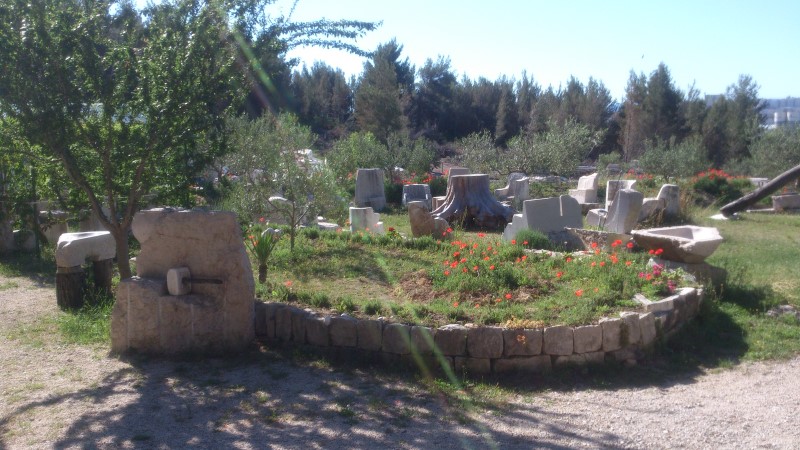
Photo Credit: Ivan Tokić
Ivan hopes to host more travellers and local community interested in the project, welcoming those who would be willing to work for board. Individuals specifically adept with social media and fundraising, armed with motivation to bring new life to its collaborative design are encouraged to get in touch through the Nove Starine Facebook page.
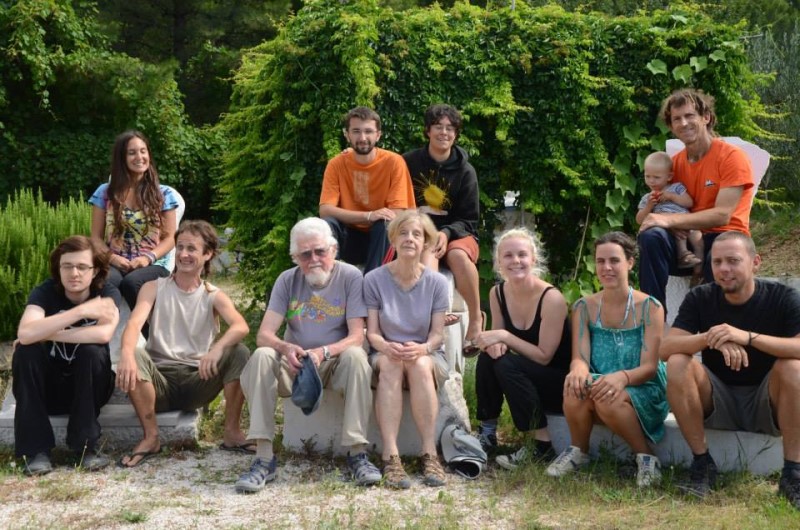
Photo Credit: Ivan Tokić, international visitors and friends of Nove Starine Park
“We have many projects and ideas, and because there is so much space and freedom here, our only limitation is finding the right helping hands to make it happen. We have an outdoor cinema on a stage that would greatly benefit from some experienced minds, to perhaps take over for the summer months and put on some events/evenings.
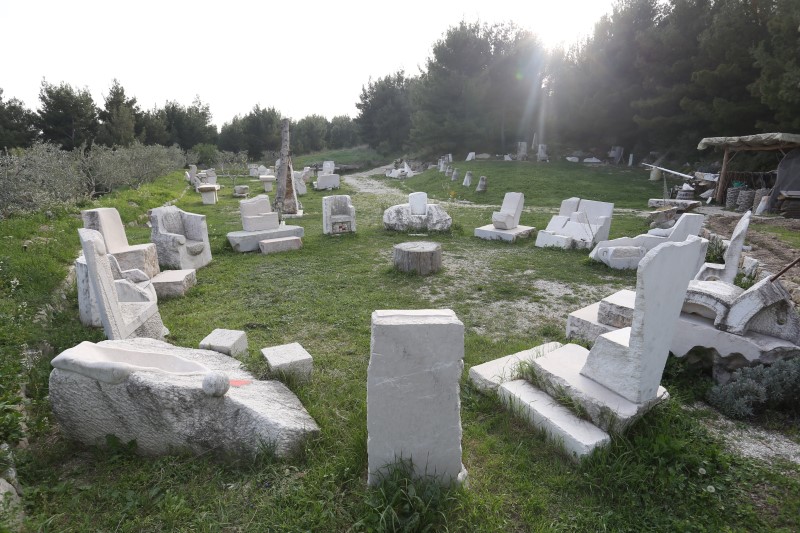
Photo Credit: Ivan Tokić
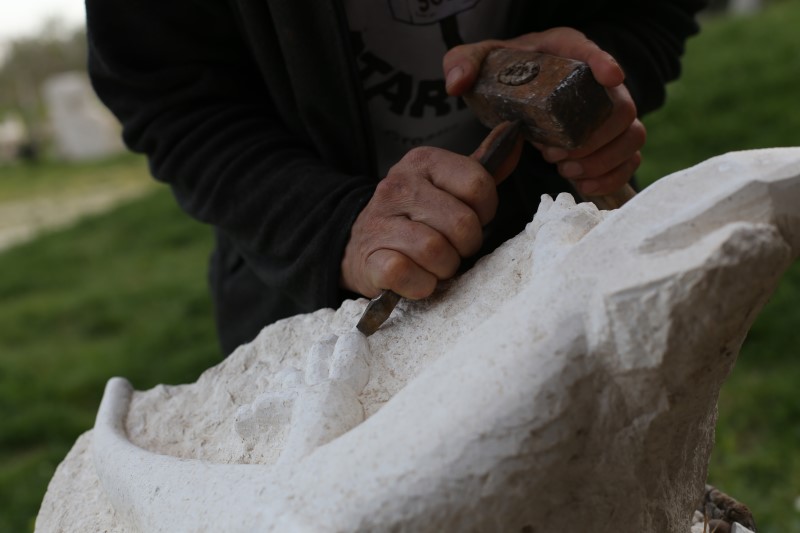
Photo Credit: Srđan Tutić
It's really important that the local people are invited to be a part of what is happening here, too. We need all the support we can get to be successful.”
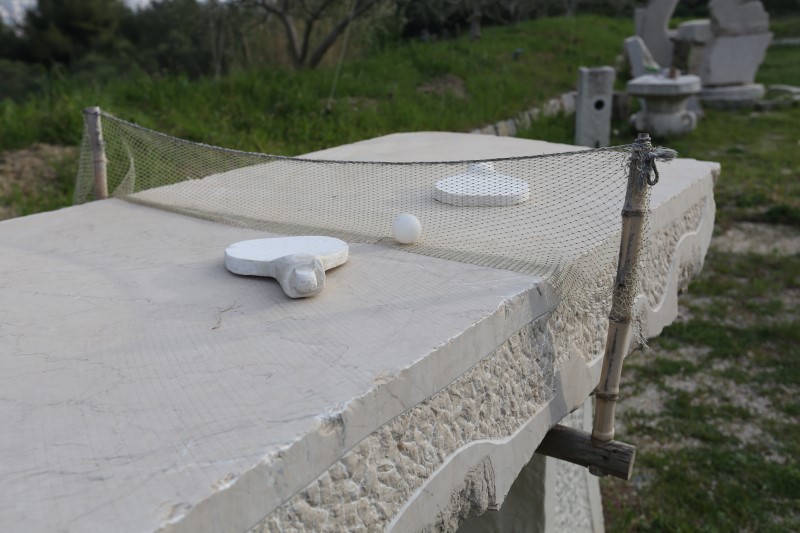
Photo Credit: Srđan Tutić
Nostalgic for times spent living in the thick of Suffolk's oak and hornbeam, framing the picturesque Norfolk border of England, I quickly found myself imagining the off-grid pace once more; away from the Mittel-Europe grind of concrete jungles and densely carbonated air. In balance though, the city life is convenient, and if you've ever stripped naked and stood in an oversized woodland with a camper’s shower, hung precariously on a branch, thrashing a sack of unforgivingly cold water over you, you'll know the simple life, although whimsical and romantic in its essence, is not for the faint-hearted.
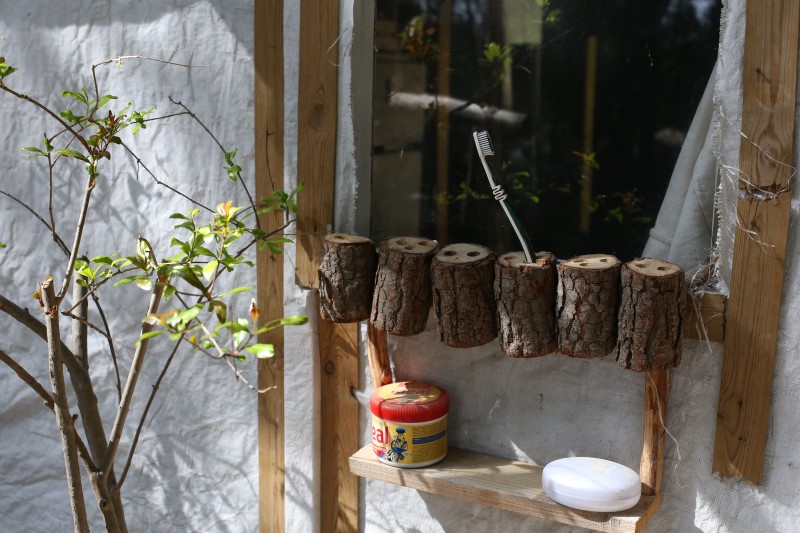
Photo Credit: Srđan Tutić
The project plans to continue in its mission to demonstrate sustainable practices symbiotic with the natural environment, alongside a stone carving school and traditional olive pressing on-site starting October this year. Ivan finished by saying “the whole thing [project] has been a huge learning process, it’s really not about the destination, just the process.”
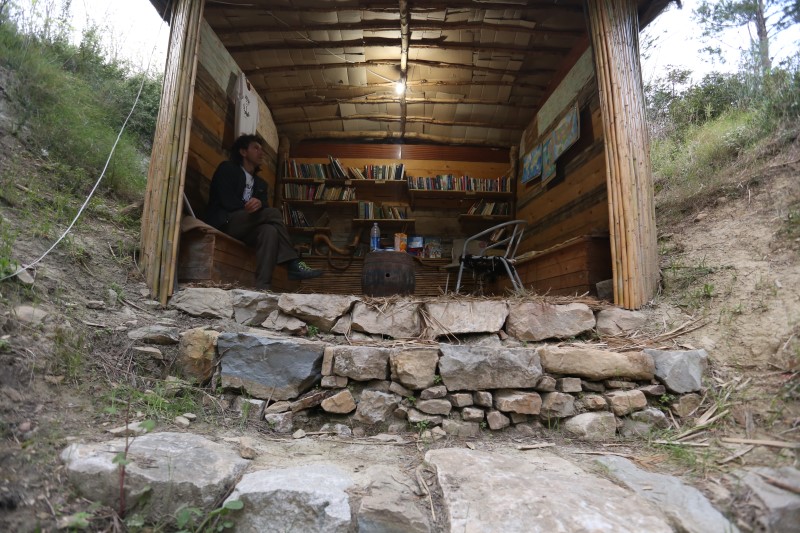
Photo Credit: Srđan Tutić
For more news from Split and surrounding, visit Total Split.


